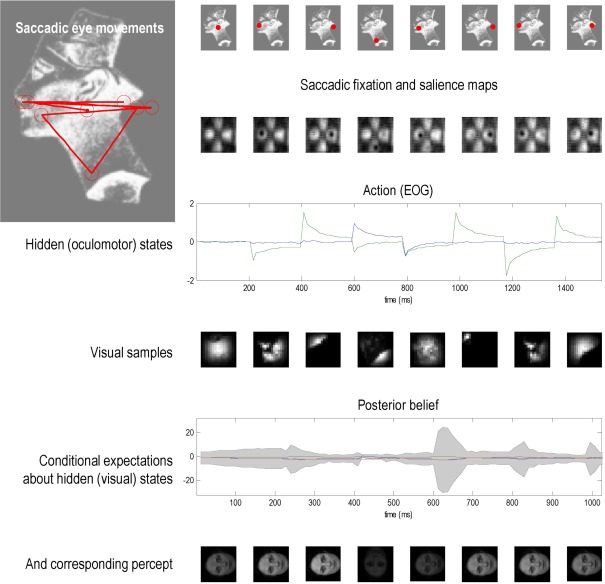Figure 6.
This figure uses the same format as the previous figure, but shows the result of presenting an unknown (unrecognizable) face – the image of Nefertiti from previous figures. Because the agent has no internal image or hypothesis that can produce veridical predictions about salient locations to foveate, it cannot resolve the causes of its sensory input and is unable to assimilate visual information into a precise posterior belief about the stimulus. Saccadic movements are generated by a saliency map that represents the most salient locations based upon a mixture of all internal hypotheses about the stimulus. Irrespective of where the agent looks, it can find no posterior beliefs or hypothesis that can explain the sensory input. As a result, there is a persistent posterior uncertainty about the states of the world that fail to resolve themselves. The ensuing percepts are poorly formed and change sporadically with successive saccades.

